-
 Bitcoin
Bitcoin $118700
0.18% -
 Ethereum
Ethereum $4207
-0.08% -
 XRP
XRP $3.137
-1.21% -
 Tether USDt
Tether USDt $0.0000
-0.01% -
 BNB
BNB $802.0
0.16% -
 Solana
Solana $174.9
-4.66% -
 USDC
USDC $0.0000
0.01% -
 Dogecoin
Dogecoin $0.2240
-3.41% -
 TRON
TRON $0.3443
1.62% -
 Cardano
Cardano $0.7730
-2.77% -
 Hyperliquid
Hyperliquid $43.29
-3.27% -
 Chainlink
Chainlink $21.13
-3.66% -
 Stellar
Stellar $0.4295
-2.58% -
 Sui
Sui $3.652
-4.60% -
 Bitcoin Cash
Bitcoin Cash $577.8
1.67% -
 Hedera
Hedera $0.2453
-4.42% -
 Ethena USDe
Ethena USDe $1.001
-0.01% -
 Avalanche
Avalanche $22.85
-3.28% -
 Litecoin
Litecoin $120.4
-2.94% -
 Toncoin
Toncoin $3.367
1.48% -
 UNUS SED LEO
UNUS SED LEO $8.979
-0.56% -
 Shiba Inu
Shiba Inu $0.00001294
-4.04% -
 Uniswap
Uniswap $11.03
1.68% -
 Polkadot
Polkadot $3.856
-4.18% -
 Dai
Dai $1.000
0.00% -
 Cronos
Cronos $0.1654
2.16% -
 Ethena
Ethena $0.7810
0.70% -
 Monero
Monero $272.9
2.11% -
 Bitget Token
Bitget Token $4.397
-0.88% -
 Pepe
Pepe $0.00001124
-5.87%
How can zero-knowledge proofs enhance privacy on a blockchain?
Zero-knowledge proofs enable private, scalable blockchains by verifying transactions without revealing data, using techniques like zk-SNARKs and zk-STARKs.
Aug 12, 2025 at 02:15 am

Understanding Zero-Knowledge Proofs in Blockchain Context
Zero-knowledge proofs (ZKPs) are cryptographic protocols that allow one party (the prover) to prove to another party (the verifier) that a statement is true without revealing any information beyond the truth of the statement itself. In the context of blockchain, this means users can validate transactions or data without exposing the underlying details. This capability is transformative for privacy, as blockchains are inherently transparent—every transaction is recorded on a public ledger. With zero-knowledge proofs, participants can maintain confidentiality while still ensuring the integrity and correctness of the system.
For example, a user can prove they have sufficient funds to make a transaction without revealing their actual balance. The verification process relies on mathematical constructs that confirm the validity of the claim without exposing inputs. This mechanism prevents sensitive data from being exposed to the public ledger, addressing one of the major drawbacks of traditional blockchain systems.
How zk-SNARKs Enable Private Transactions
One of the most widely used implementations of zero-knowledge proofs in blockchain is zk-SNARKs (Zero-Knowledge Succinct Non-Interactive Argument of Knowledge). These are particularly effective because they generate very small proofs that can be verified quickly, making them suitable for blockchain environments where efficiency is crucial.
To implement zk-SNARKs in a blockchain transaction:
- A circuit is designed to represent the logic of the transaction (e.g., “the sender owns the funds and the balance is sufficient”).
- The prover generates a proof using their private inputs (such as secret keys or amounts) and the public parameters of the circuit.
- The proof is attached to the transaction and broadcasted to the network.
- Validators check the proof against the public parameters without accessing the private data.
The entire process ensures that no third party can determine the sender, receiver, or amount involved in the transaction. Projects like Zcash utilize zk-SNARKs to enable shielded transactions, where transaction details remain encrypted while still being cryptographically verified.
zk-STARKs: A Transparent Alternative
While zk-SNARKs are powerful, they rely on a trusted setup phase, which introduces potential vulnerabilities if the initial parameters are compromised. zk-STARKs (Zero-Knowledge Scalable Transparent Arguments of Knowledge) eliminate this risk by using publicly verifiable randomness instead of a trusted setup.
zk-STARKs offer several advantages:
- No need for a trusted setup, increasing security and decentralization.
- Resistance to quantum computing attacks due to reliance on hash functions rather than elliptic curve cryptography.
- Greater transparency in proof generation and verification.
Despite larger proof sizes compared to zk-SNARKs, zk-STARKs are being adopted in privacy-focused layer-2 solutions such as StarkNet. These systems allow users to submit transactions off-chain and post only the zero-knowledge proof to the main blockchain, preserving privacy while reducing on-chain data exposure.
Privacy-Preserving Smart Contracts
Smart contracts on platforms like Ethereum are fully transparent—every input, output, and state change is visible. Zero-knowledge proofs enable the creation of private smart contracts, where the logic is executed without revealing the data involved.
To deploy a privacy-preserving smart contract:
- Define the contract logic in a way that can be expressed as a computational circuit.
- Use a zero-knowledge framework (e.g., Circom or Noir) to compile the logic into a proving system.
- Allow users to submit encrypted inputs and generate proofs of correct execution.
- The blockchain verifies the proof and updates the contract state without accessing the raw data.
This approach is used in projects like Aztec Network, where users can interact with DeFi applications such as lending and swapping while keeping their balances and transaction amounts hidden. The contract enforces rules through cryptographic verification, not data exposure.
Scalability and Privacy Combined via zk-Rollups
zk-Rollups are layer-2 scaling solutions that bundle thousands of transactions off-chain and submit a single zero-knowledge proof to the main chain. This reduces congestion and gas costs while enhancing privacy.
The process works as follows:
- Transactions are submitted to a rollup operator off the main blockchain.
- The operator aggregates the transactions and computes a new state root.
- A zk-proof is generated to prove that the new state correctly follows from the previous one.
- The proof and state root are posted to the main chain for verification.
Because only the proof and final state are published, individual transaction details remain hidden. Even the rollup operator cannot access user data if the system is designed with end-to-end encryption. This model is used by platforms like Polygon zkEVM and zkSync, combining scalability with strong privacy guarantees.
Challenges and Implementation Considerations
Deploying zero-knowledge proofs in blockchain systems involves technical and operational challenges:
- High computational overhead for generating proofs, requiring specialized hardware.
- Complexity in developing and auditing circuits, increasing the risk of bugs.
- Limited developer tooling and documentation compared to traditional smart contract frameworks.
- Potential centralization if only a few entities can afford to run proving infrastructure.
To mitigate these issues:
- Use optimized proving systems like Halo2, which support recursive proofs and reduce hardware demands.
- Leverage open-source libraries and frameworks such as SnarkyJS or Noir for safer development.
- Implement decentralized proving networks where multiple nodes can contribute to proof generation.
Despite these hurdles, the integration of zero-knowledge proofs continues to expand, driven by growing demand for privacy and scalability.
Frequently Asked Questions
Can zero-knowledge proofs be used on any blockchain?
Yes, but implementation depends on the blockchain’s support for smart contracts and cryptographic operations. Ethereum, Polygon, and other EVM-compatible chains support zk-based applications through specialized tooling. Non-EVM chains may require custom integration.
Do zero-knowledge proofs eliminate all privacy risks?
No. While they hide transaction content, metadata such as transaction timing, IP addresses, and interaction patterns can still leak information. Additional measures like mixers or encrypted messaging layers are often needed.
How do users generate zero-knowledge proofs in practice?
Users interact with wallet interfaces that integrate proving libraries. When initiating a private transaction, the wallet automatically compiles inputs into a proof using pre-defined circuits. The user does not need to manually handle cryptographic operations.
Are zero-knowledge proofs vulnerable to quantum attacks?
zk-SNARKs based on elliptic curve cryptography are potentially vulnerable, but zk-STARKs use hash-based cryptography, which is considered quantum-resistant. Transitioning to STARK-based systems enhances long-term security.
Disclaimer:info@kdj.com
The information provided is not trading advice. kdj.com does not assume any responsibility for any investments made based on the information provided in this article. Cryptocurrencies are highly volatile and it is highly recommended that you invest with caution after thorough research!
If you believe that the content used on this website infringes your copyright, please contact us immediately (info@kdj.com) and we will delete it promptly.
- Dogecoin's Rally Pause: Bullish Structure Still Intact?
- 2025-08-12 04:50:12
- Whales, Altcoins, and Accumulation: What's the Hype?
- 2025-08-12 04:55:16
- Floki's Valhalla: From Viking Raids to Mainstream MMORPG Domination
- 2025-08-12 05:10:12
- Do Kwon, Terra LUNA, and Lunar Horizons: A Tale of Trials and Tribulations
- 2025-08-12 04:30:12
- Bitcoin, Wealth Protection, and Economies: A Modern Financial Safety Net
- 2025-08-12 04:30:12
- INJ ETF, Crypto Future, and Uncertainty: Navigating the Murky Waters
- 2025-08-12 02:50:12
Related knowledge

How can zero-knowledge proofs enhance privacy on a blockchain?
Aug 12,2025 at 02:15am
Understanding Zero-Knowledge Proofs in Blockchain ContextZero-knowledge proofs (ZKPs) are cryptographic protocols that allow one party (the prover) to...
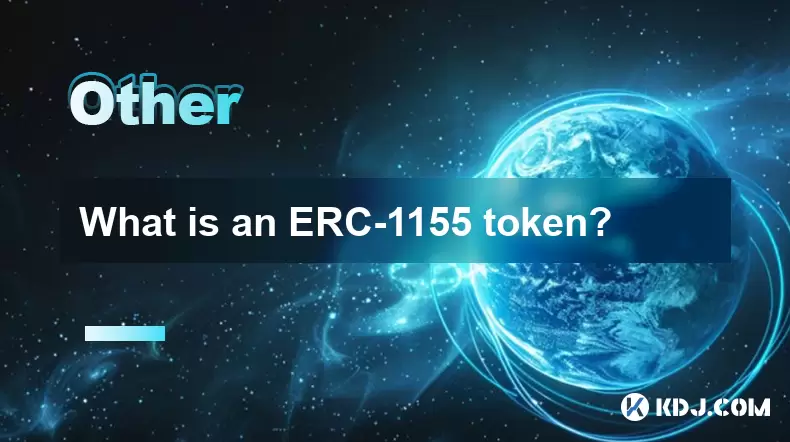
What is an ERC-1155 token?
Aug 12,2025 at 05:21am
Understanding the ERC-1155 Token StandardThe ERC-1155 token standard is a multi-token standard introduced on the Ethereum blockchain that enables the ...
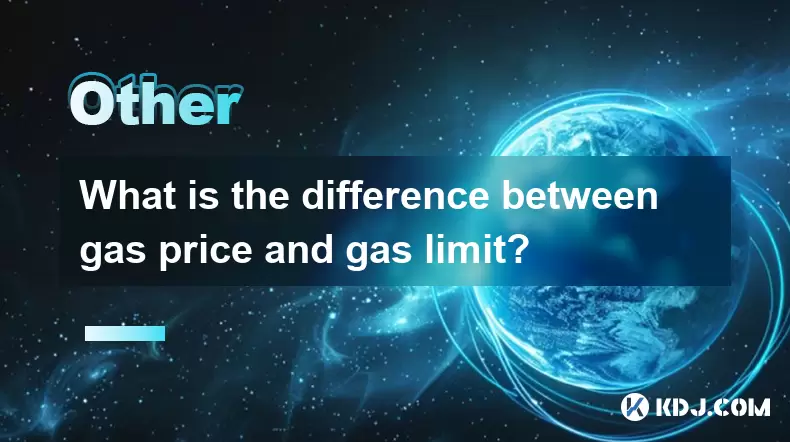
What is the difference between gas price and gas limit?
Aug 09,2025 at 08:42pm
Understanding Gas in Ethereum and EVM-Based NetworksIn blockchain networks that support smart contracts—particularly Ethereum and other EVM (Ethereum ...
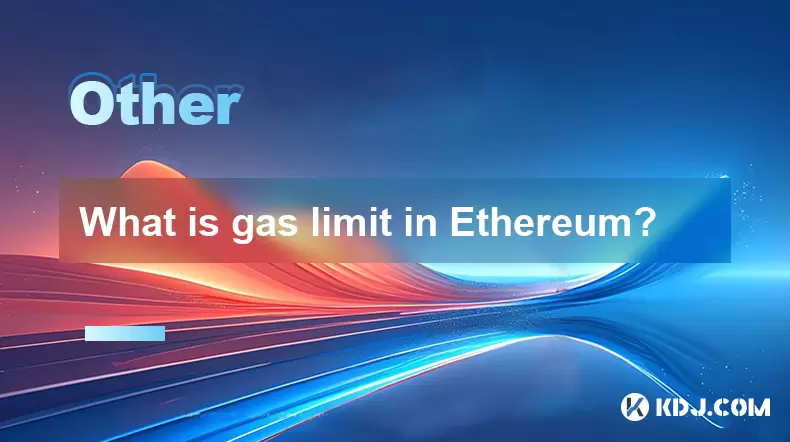
What is gas limit in Ethereum?
Aug 11,2025 at 04:29am
Understanding the Concept of Gas in EthereumIn the Ethereum network, gas is a unit that measures the computational effort required to execute operatio...
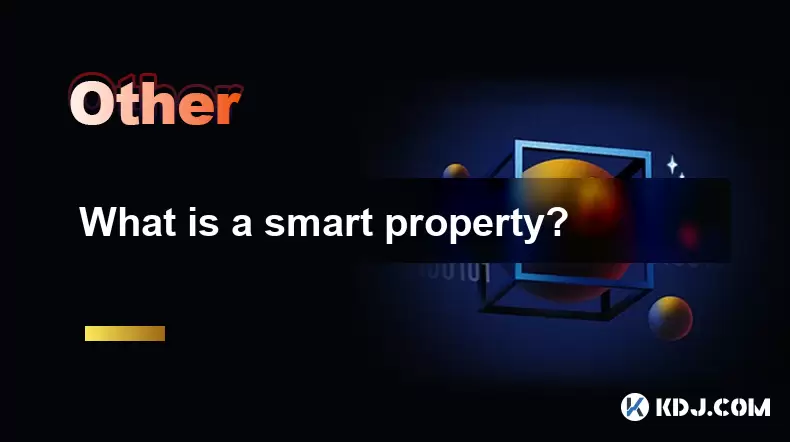
What is a smart property?
Aug 12,2025 at 05:14am
Understanding Smart Property in the Cryptocurrency EcosystemSmart property refers to physical or digital assets whose ownership and transfer are manag...
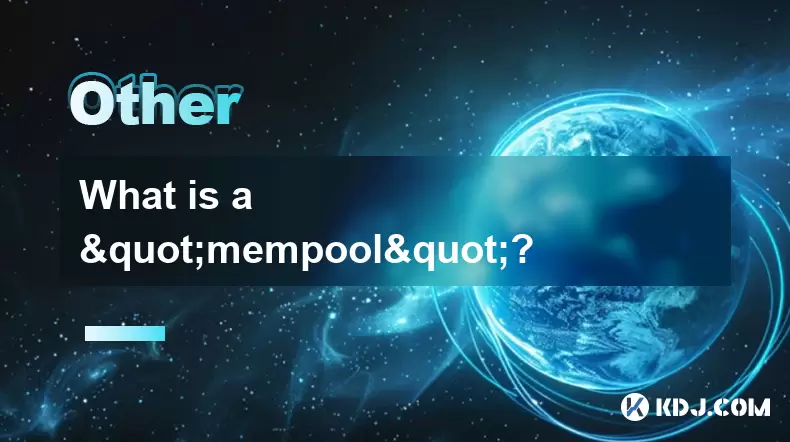
What is a "mempool"?
Aug 11,2025 at 02:49am
Understanding the Mempool in Cryptocurrency NetworksThe mempool, short for memory pool, is a critical component of blockchain networks like Bitcoin an...

How can zero-knowledge proofs enhance privacy on a blockchain?
Aug 12,2025 at 02:15am
Understanding Zero-Knowledge Proofs in Blockchain ContextZero-knowledge proofs (ZKPs) are cryptographic protocols that allow one party (the prover) to...

What is an ERC-1155 token?
Aug 12,2025 at 05:21am
Understanding the ERC-1155 Token StandardThe ERC-1155 token standard is a multi-token standard introduced on the Ethereum blockchain that enables the ...

What is the difference between gas price and gas limit?
Aug 09,2025 at 08:42pm
Understanding Gas in Ethereum and EVM-Based NetworksIn blockchain networks that support smart contracts—particularly Ethereum and other EVM (Ethereum ...

What is gas limit in Ethereum?
Aug 11,2025 at 04:29am
Understanding the Concept of Gas in EthereumIn the Ethereum network, gas is a unit that measures the computational effort required to execute operatio...

What is a smart property?
Aug 12,2025 at 05:14am
Understanding Smart Property in the Cryptocurrency EcosystemSmart property refers to physical or digital assets whose ownership and transfer are manag...

What is a "mempool"?
Aug 11,2025 at 02:49am
Understanding the Mempool in Cryptocurrency NetworksThe mempool, short for memory pool, is a critical component of blockchain networks like Bitcoin an...
See all articles

























































































